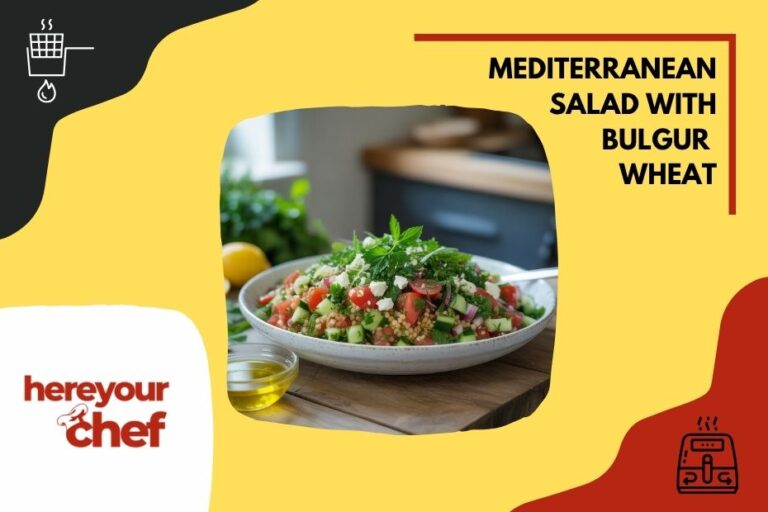Mediterranean Orzo Salad: A Fresh and Flavorful Recipe You’ll Love

The Mediterranean Orzo Salad is a delightful fusion of flavors and textures, offering a refreshing taste of the Mediterranean basin.
It’s a dish that beautifully balances the tang of lemon with the earthiness of fresh herbs and the creaminess of feta.
I first encountered this vibrant salad during a summer visit to a coastal Greek village, where the locals served it as a staple at every gathering.
Perfect for warm weather, this salad is both satisfying and light, making it an ideal choice for picnics or alfresco dining.
Whether you’re looking to impress guests or simply enjoy a flavorful dish at home, this recipe promises ease and deliciousness.
Embrace the fresh ingredients and simple preparation that make the Mediterranean Orzo Salad a beloved classic.
The History and Cultural Significance
• Mediterranean Orzo Salad traces its origins to the coastal regions of Greece, where it was originally created as a way to showcase fresh, local produce.
• The dish evolved over decades as ingredients like sun-dried tomatoes and olives were incorporated, eventually becoming the beloved version we know today.
• In Greek culture, this dish traditionally appears at summer festivals and family gatherings, symbolizing the abundance of the harvest season.
• While many variations exist across different regions, the authentic version maintains its vibrant color and fresh flavor profile that sets it apart from imitations.
Recipe Overview
| Recipe Times & Servings | |
|---|---|
| ⏱️ Prep Time: | 15 minutes |
| 🔥 Cook Time: | 10 minutes |
| ⏰ Total Time: | 25 minutes |
| 👥 Servings: | 4 |
Nutritional Information (per serving)
| Nutritional Information (per serving) | |
|---|---|
| 🔥 Calories: | 320 |
| 🥩 Protein: | 9g |
| 🌾 Carbs: | 42g |
| 🥑 Fat: | 12g |
| 🌿 Fiber: | 5g |
| 🍯 Sugar: | 4g |
Essential Equipment Guide
Large Pot: A large pot is crucial for cooking the orzo evenly and preventing it from sticking together. Alternatives include a deep saucepan with a wide base. Look for pots with a non-stick interior for best results.
Mixing Bowl: A spacious mixing bowl is essential for tossing the salad ingredients uniformly. A substitute could be a large salad bowl. Choose one that is lightweight and easy to maneuver.
Sharp Chef’s Knife: A sharp chef’s knife is vital for efficiently chopping vegetables and herbs. A santoku knife can also work well. Ensure the knife is well-balanced and comfortable to hold.
Ingredients
For the Base
| Amount | Ingredient | Notes |
|---|---|---|
| 1 cup | orzo pasta | cooked to al dente |
Vegetables
| Amount | Ingredient | Notes |
|---|---|---|
| 1 cup | cherry tomatoes | halved for a burst of sweetness |
| 1 medium | cucumber | diced for crunch |
| 1 small | red onion | finely chopped for sharpness |
Seasonings
| Amount | Ingredient | Notes |
|---|---|---|
| 2 tablespoons | olive oil | adds richness |
| 1 tablespoon | lemon juice | for tanginess |
| 1 teaspoon | dried oregano | for aromatic flavor |
Extras
| Amount | Ingredient | Notes |
|---|---|---|
| 1/2 cup | feta cheese | crumbled for creaminess |
| 1/4 cup | kalamata olives | sliced for a briny taste |
| 2 tablespoons | fresh parsley | chopped for garnish |
Preparation Methods
Cooking Orzo: Cooking orzo to al dente involves boiling it in salted water until it’s firm to the bite. This is important to prevent the pasta from becoming mushy when mixed with the dressing. Stir occasionally to prevent sticking, and taste for doneness.
Chopping Vegetables: Uniformly chopping vegetables ensures even distribution of flavors and textures. Use a sharp knife for precision. Aim for bite-sized pieces to complement the pasta.
Macerating Onions: Soaking chopped onions in lemon juice mellows their sharpness and enhances their sweetness. Let them sit for about 10 minutes before adding to the salad. This technique adds depth to the flavor profile.
Step 1: Prepare Ingredients

Gather all ingredients and ensure they are fresh and ready to use.
Rinse the vegetables under cold water to remove any impurities.
Pat the vegetables dry with a clean kitchen towel to prevent excess moisture in the salad.
Organize the ingredients on your countertop for easy access during preparation.
Step 2: Cook the Orzo
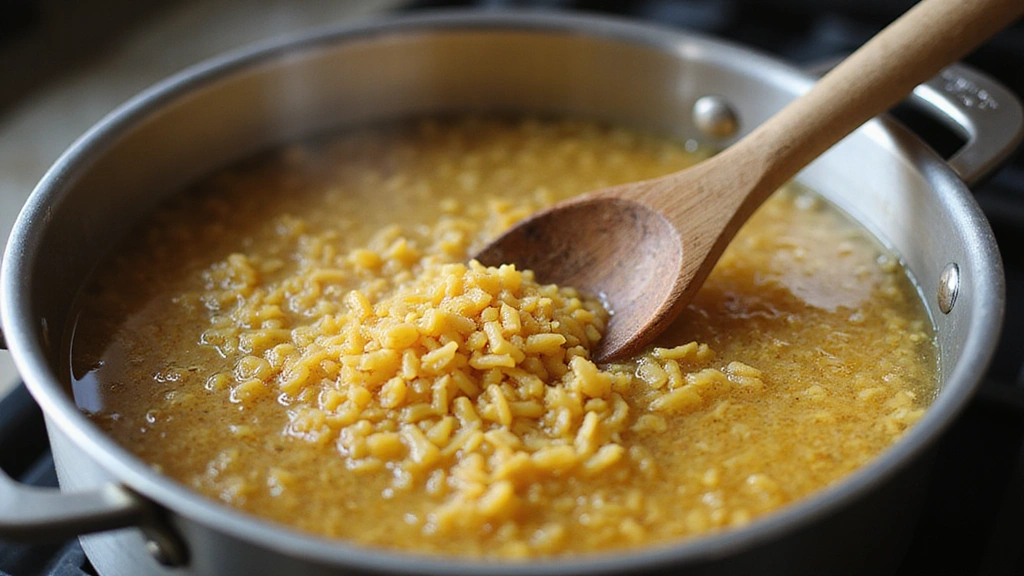
Bring a large pot of salted water to a boil over high heat.
Add the orzo and cook for 8-10 minutes until al dente.
Stir occasionally to prevent the orzo from sticking to the pot.
Drain the orzo in a colander and rinse with cold water to stop the cooking process.
Step 3: Chop the Vegetables

Using a sharp chef’s knife, halve the cherry tomatoes and dice the cucumber.
Finely chop the red onion and soak it in lemon juice to macerate.
Slice the kalamata olives into thin rounds for easy mixing.
Chop the fresh parsley finely for garnish and set aside.
Step 4: Make the Dressing

In a small bowl, combine olive oil, lemon juice, and dried oregano.
Whisk the ingredients together until well emulsified.
Taste the dressing and adjust seasoning if necessary.
Set the dressing aside for later use.
Step 5: Combine Salad Ingredients
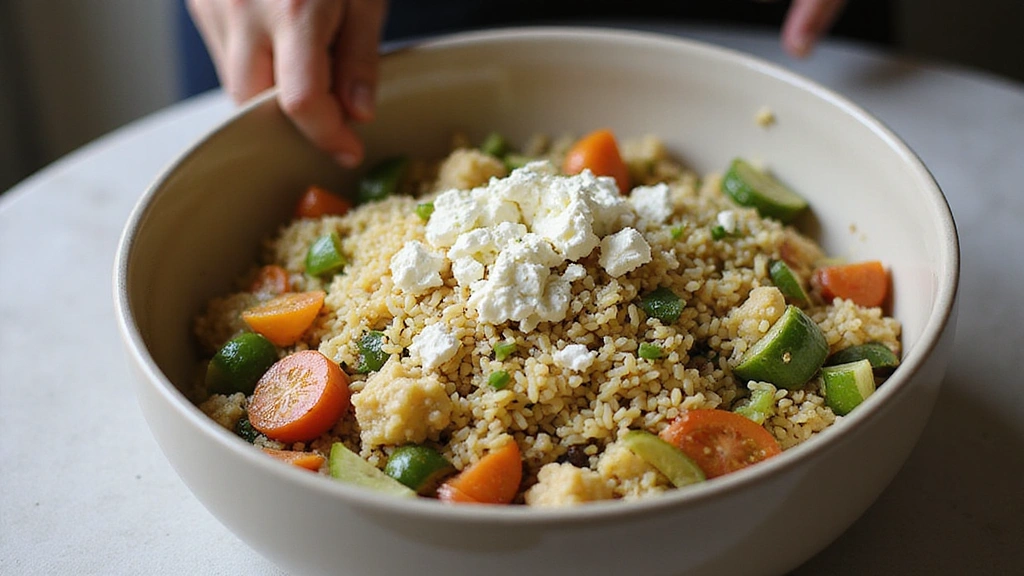
In a large mixing bowl, add the cooked orzo.
Gently fold in the chopped vegetables and macerated onions.
Add the sliced olives and crumbled feta cheese to the mix.
Pour the prepared dressing over the salad ingredients.
Step 6: Toss the Salad
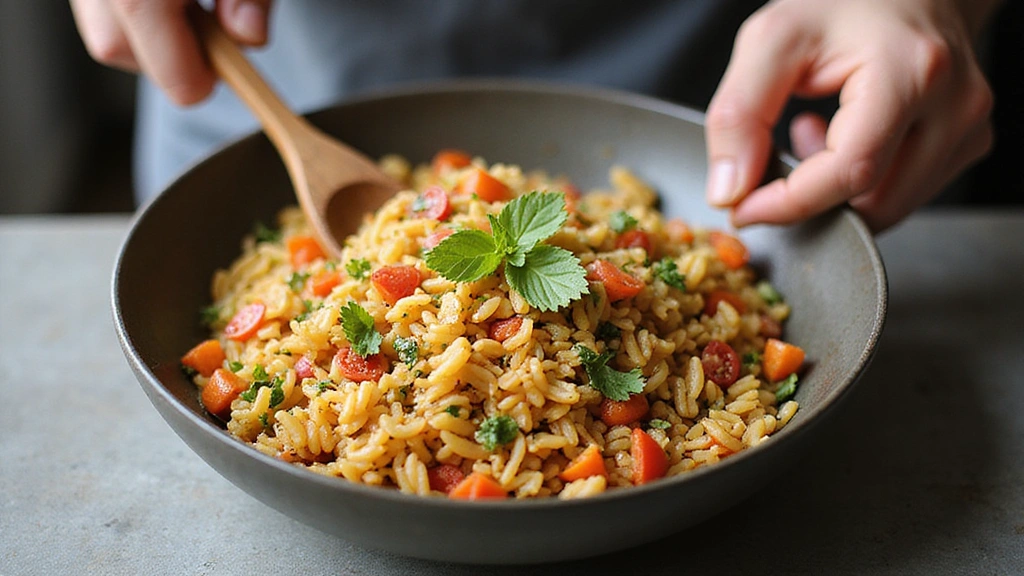
Using a wooden spoon, gently toss the salad to combine ingredients evenly.
Ensure the dressing coats all components for balanced flavor.
Be careful not to crush the tomatoes or break the orzo.
Taste the salad and adjust seasoning if needed.
Step 7: Chill the Salad
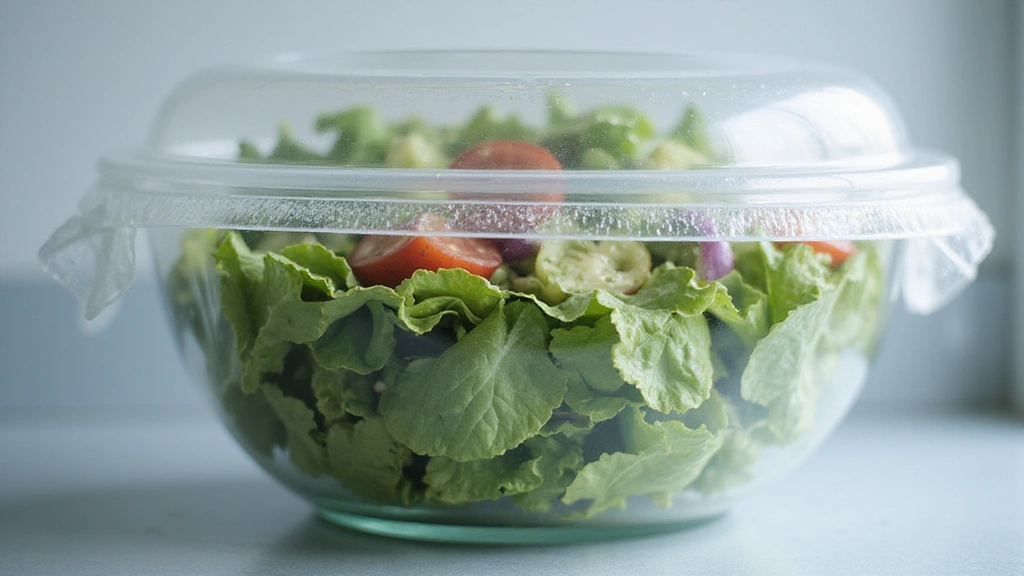
Transfer the mixed salad to a serving dish.
Cover it with plastic wrap and refrigerate for at least 30 minutes.
Chilling allows the flavors to meld and intensify.
Remove from the fridge just before serving for optimal freshness.
Step 8: Garnish and Serve
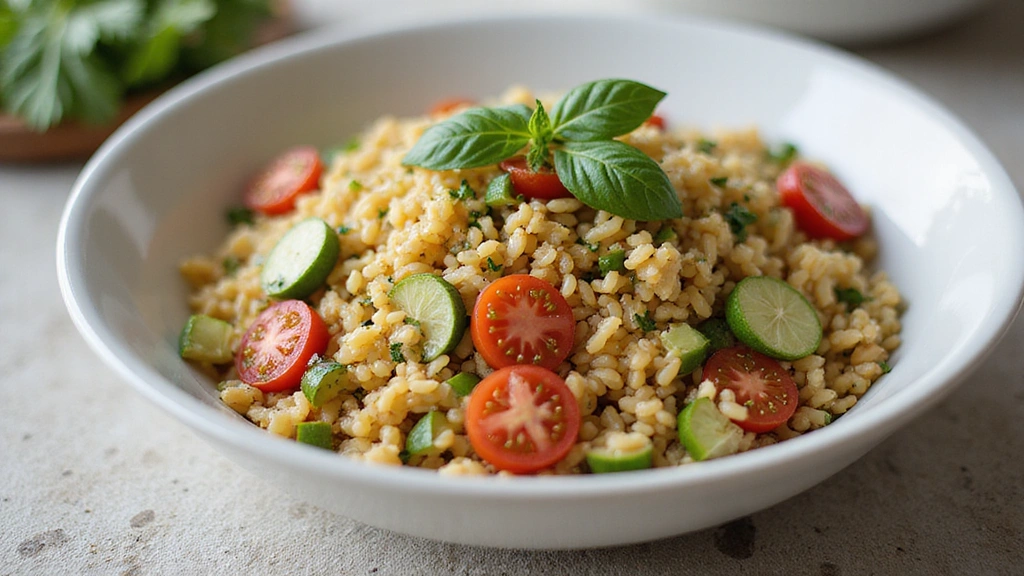
Before serving, garnish the salad with chopped fresh parsley.
Add a few extra crumbles of feta cheese on top for presentation.
Serve the salad chilled for the best flavor experience.
Enjoy as a standalone dish or alongside grilled meats.
Critical Timing and Temperature Guide
Cooking Orzo: Boil orzo for exactly 8-10 minutes at a rolling boil. Look for firm texture as a sign of doneness. Avoid overcooking to prevent mushiness.
Chilling the Salad: Chill in the refrigerator for 30 minutes. Salad should be cold to the touch before serving. Avoid leaving it out at room temperature for too long.
Serving Temperature: Serve the salad slightly chilled. If too cold, flavors can be muted. Let sit at room temperature for a few minutes if necessary.
Pro Tips for Mediterranean Orzo Salad
• Ingredient Selection: Choose ripe cherry tomatoes and high-quality feta for the best flavor impact.
• Preparation Secret: Macerate the onions in lemon juice to reduce sharpness and enhance sweetness.
• Temperature Management: Cook orzo in boiling water and chill salad thoroughly for optimal texture.
• Texture Enhancement: Use a large mixing bowl to toss ingredients gently without crushing.
• Flavor Layering: Combine fresh herbs with dried spices for a more complex taste.
• Make-Ahead Strategies: Prepare the salad a day in advance, keeping dressing separate until serving.
• Restaurant-Quality Finishing Touches: Garnish with extra parsley and feta for an elevated look.
• Equipment Optimization: Use a colander for efficient orzo draining to avoid clumping.
Troubleshooting Common Issues
• Texture Too Dense: Cooking orzo past al dente can lead to a dense texture. Ensure to taste for doneness and rinse under cold water to halt cooking.
• Flavors Unbalanced: If the salad tastes too tangy, add a touch more olive oil or a sprinkle of sugar to balance.
• Vegetables Too Watery: Properly pat dry vegetables after rinsing to prevent a watery salad.
• Dressing Not Emulsified: Whisk dressing ingredients thoroughly to ensure a smooth, cohesive mixture.
• Stale Taste: Use fresh herbs and high-quality ingredients. Refresh salad with a squeeze of lemon before serving if needed.
• Orzo Clumping: Stir orzo while cooking and rinse with cold water to prevent sticking.
Variations and Regional Differences
• Italian Style: Incorporates sun-dried tomatoes and fresh basil. Uses mozzarella instead of feta for a distinct flavor profile.
• Middle Eastern Twist: Adds chickpeas and za’atar seasoning. Lemon tahini dressing replaces traditional olive oil and lemon juice.
• Spanish Influence: Includes roasted red peppers and smoked paprika. Manchego cheese instead of feta adds a unique taste.
• North African Touch: Features preserved lemons and harissa for a spicy kick. Garnished with toasted almonds for crunch.
Food Science Behind the Recipe
• Emulsification: The combination of oil and lemon juice creates an emulsion, allowing the dressing to coat ingredients evenly.
• Starch Gelatinization: Cooking orzo releases starches, providing a creamy texture when cooled properly.
• Acidic Balance: Lemon juice not only adds flavor but also tenderizes vegetables and balances the richness of olive oil.
• Flavor Absorption: Chilling the salad allows flavors to meld as the pasta absorbs the dressing, enhancing taste.
Frequently Asked Questions
What’s the most common mistake people make when preparing Mediterranean Orzo Salad? Overcooking the orzo is a common mistake that leads to a mushy texture. Always aim for al dente.
Can I make this salad ahead of time? Yes, it can be made a day in advance. Keep the dressing separate until just before serving to maintain texture.
What can I substitute for feta cheese? Goat cheese or ricotta salata are great alternatives that maintain a similar texture and flavor profile.
How do I store leftovers? Store in an airtight container in the refrigerator for up to three days. Stir before serving to redistribute flavors.
Can I add protein to this salad? Absolutely! Grilled chicken, shrimp, or chickpeas make excellent additions for added protein.
How do I prevent the salad from becoming dry? Ensure the salad is properly dressed and consider adding a splash of olive oil if it appears dry after refrigeration.
Is it possible to make this salad gluten-free? Yes, substitute regular orzo with a gluten-free pasta option, such as quinoa pasta.
Can I use dried herbs instead of fresh? While fresh herbs are preferred, dried herbs can be used in smaller quantities to avoid overpowering the salad.
What type of olives are best for this recipe? Kalamata olives are recommended for their rich, briny flavor, but any good quality black olives will work.
Serving and Presentation Guide
• Traditional Presentation: Serve in a large, shallow salad bowl, garnished with extra parsley and a drizzle of olive oil.
• Individual Portions: Present in small bowls or plates, topped with a lemon wedge for a personal touch.
• Buffet Style: Arrange in a serving platter with a mix of colorful ingredients on top for visual appeal.
• Picnic Ready: Pack in a chilled container with a side of crusty bread for a portable meal.
Conclusion
The Mediterranean Orzo Salad is a delightful addition to any meal, offering a fresh and vibrant taste of the Mediterranean.
With its simple preparation and bold flavors, it’s sure to become a staple in your culinary repertoire.
Gather your ingredients and embrace the joy of creating this refreshing salad, perfect for any occasion.
Enjoy the harmonious blend of flavors and textures that will transport your taste buds to a sun-drenched Mediterranean shore.

